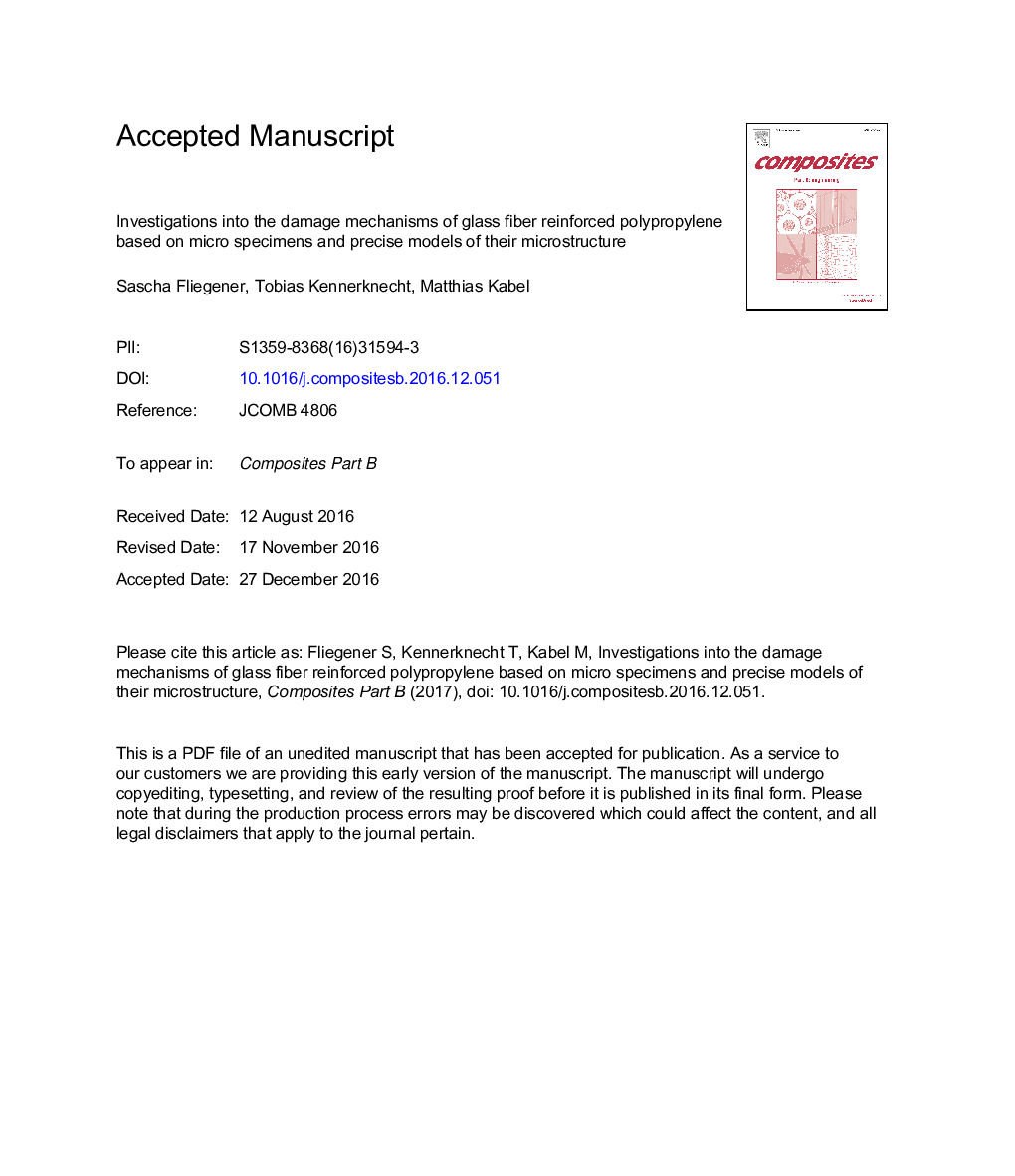| Article ID | Journal | Published Year | Pages | File Type |
|---|---|---|---|---|
| 5021450 | Composites Part B: Engineering | 2017 | 38 Pages |
Abstract
Fiber reinforced thermoplastics are considered as promising candidates to enable the mass production of lightweight components. To assure their structural application, accurate methods to describe their mechanical behavior are mandatory. However, the modeling of the damage behavior of the thermoplastic matrix under multiaxial stress states within the microstructure still poses enormous challenges. In order to capture the in situ behavior, a novel methodology is applied. Tensile tests are conducted on micro specimens, which are manufactured from 100 μm thin slices of the material's cross section. A corresponding finite element mesh which precisely depicts the individual microstructure of each sample is reconstructed based on microscope images and computer tomographic (CT) scans. Since the dimensions of the specimens are sufficiently small, the position and orientation of each fiber can be directly mapped to the model. Furthermore, the evolution of deformation and damage within the microstructure is visible in microscope images. Inverse simulations are performed to separate the mechanical behavior of the matrix, the fiber-matrix interface and the fibers. On a first specimen with approximately 5 vol-% fiber fraction, the constituent properties are calibrated by an automated parameter optimization procedure until the global stress-strain curve of the simulation agrees well with the experiment. The approach is validated by the simulation of a second specimen with a strongly different fiber fraction (15 vol-%) and thus, a strongly different damage behavior. It is shown that the stress-strain curves and the observed damage evolution of both specimens can be accurately captured applying the same material parameters. As an outlook for potential industrial applications of the method, mesh free fast Fourier transform (FFT) simulations are performed. Such models are based on raw CT voxel data, rendering the extensive work of geometrically reconstructing the microstructure obsolete.
Related Topics
Physical Sciences and Engineering
Engineering
Engineering (General)
Authors
Sascha Fliegener, Tobias Kennerknecht, Matthias Kabel,
